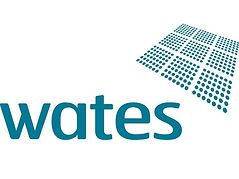Case Studies
To raise standards across the industry, we are pleased to share with you some examples of initiatives/actions being taken on health, in particular on dust or mental health.
Click a Case Study to Learn More

After reviewing the current safety policies, procedures and statistics it came to light that there was a distinct lack of Mental Health issues being reported in the business from both operative and management levels.
R&C Williams therefore held a wellbeing morning which included breakfast and an open platform to raise any work-related or personal wellbeing or safety concerns. They also run a survey and developed wellbeing resources based on the responses that were received. Click the link to learn more.

Studies have found that working in remote places can make it difficult to maintain a work-life balance and some end up feeling lonely, depressed and missing loved ones. Balfour Beatty therefore launched a new wellbeing initiative in the Scottish Highlands to help their remote workers feel connected. A wide range of activities were organised to help people socialise, get active and relax including surfing, fishing, go-karting and hiking.
To help promote best practice on site, Skanska and RVT Group teamed up to create a series of videos and photos demonstrating how engineering controls can be used to manage dust, fume and noise effectively.

COSHH Regulations state that LEV equipment should undergo Thorough Examination and Testing (TExT) every 14 months to ensure that the kit is working as effectively as originally intended in order to protect employees’ health.
RVT have set up their own in-house TExT system to ensure that kit is always in top condition and ready to be used by construction teams.

Acting as a sub-contractor, Balfour Beatty was able to influence both the Principal Contractor and Principal Designer during the design phase of this project, to eliminate the need for the installation of service brackets by introducing precast Unistrut as an alternative design option. This eliminated the need for drilling which resulted in a number of positive outcomes on health including a reduction in the risks of vibration and from exposure to dusts.

This case study explains how Miller Homes are approaching the issue of dust exposure caused during cleaning-up by different trades after completing their work by introducing type M vacuum cleaning.
They found dust levels can be reduced to a level which negates the need for RPE and means that other workers can be working safely in the plot at the same time.

Hand-arm vibration (HAVS) is a well-documented condition that is known to develop as a result of repeated use of hand-held power tools. Once HAVs manifests itself it can cause significant ill-health, painful and disabling disorders of the blood vessels, nerves and joints.
This case study outlines how J. Murphy & Sons Limited have made a decision to invest in prevention and become an early adopter and proponent of products to help prevent this debilitating condition.
This case study explains how VolkerWessels UK implemented MIND Managing Mental Health at Work training for managers and supervisors in order to raise awareness of the importance of good mental health.
This helped managers and supervisors to be able to observe symptoms in their staff, of issues such as stress, anxiety and depression, and to understand what action to take to address these.

This case study explains how SRWES has gone from a low performing business in relation to Health & Wellbeing within the Skanska Group, to one of the leading businesses.
A Health and Wellbeing Leadership Team (HWLT) was set up to assess the status and identify gaps, using a Health Maturity Matrix. A strategy was then developed to improve performance in a variety of health and wellbeing topics.

This case study outlines how Keepmoat SHEQ teams came together for a day to discuss health issues around dust. The day aimed to provide information on the HSE’s current stance on dust and health issues, delivery of the HSE’s slide pack and educating the SHEQ teams in order to equip them to deliver this information out to their site teams. Read on to find out how they went about this and what the outcomes were.

In a bid to improve performance in all areas of health and wellbeing as well as to raise awareness of amongst all employees, Lagan Construction Group have developed a health and wellbeing management strategy and programme of change.
Key to this was gaining executive-level buy-in, achieved through the setting up of a steering group to engage with the Board, Managers and representatives across the organisation. This led to the development of a roadmap, designed to ensure priority is being given to key areas which have been identified through health monitoring programmes and employee engagement activities.

‘Bin the Broom’ is Wates’ health campaign to reduce the amount of dust on their sites, through better control of dust at source.
It has involved raising awareness with the project teams and supply chain around the health risks from dust and how to reduce those risks, through hazard elimination, workplace and process modification, and effective extraction and suppression solutions.








